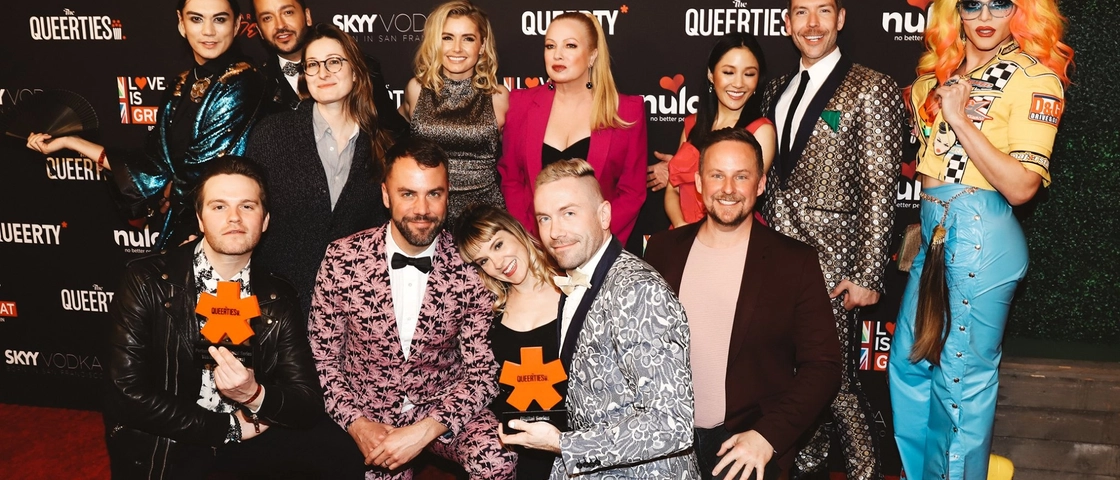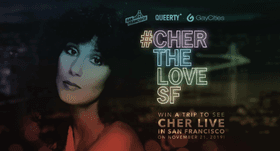According to February ComScore data, Q.Digital is now the most trafficked US-Based LGBTQ publisher. We’re incredibly proud of that, but still, that’s not enough. Engagement is what really drives us.
Our advertisers want to connect with our audiences in a genuine way, so we work hard to deliver deep engagement on all our brand partner campaigns.
For example, Queerty readers cast over 1 million votes in the 2020 Queerties Awards program. That’s over a 10x increase in votes since the program launched just a few years ago, and this isn’t the only example. Engagement across all of our campaigns, from video to sweepstakes, is booming.
So we thought we would compile a brief list of learnings for those hoping to increase engagement with their own campaigns. Sharing is caring, right?
1. Engagement Is a Team Effort – Internally & Externally
Let’s take a look at the Queerties, which is our largest campaign each year. Running a voting and awards program is a 24-hour a day sort of deal – as many of you who probably know. It takes a village. Here are some things to keep in mind.
Externally, make sure you give everyone the tools they need to become your best ambassadors and advocates. We spend a good deal of time creating shareable graphics for nominees, PR teams, fans, and fan groups so that they can easily promote the Queerties, and drive support and votes for themselves or their favorite nominees. We produce sizes for Instagram and Twitter, specifically, since that’s where we tend to see the most social engagement (which reminds me to say, pay attention to where your engagement is coming from, and customize your strategy accordingly).
This leads us to a follow-up point.
External engagement isn’t a one-and-done deal. Continue the conversation with those that are promoting and talking about your campaign. During the Queerties season, we closely monitor social media to engage with users posting about the Queerties. When people have questions, feedback or comments, we make sure to reply, ensuring that these folks feel a sense of ownership and want to continue to help out. This is especially important when we’re talking about a program that is driven by the community, like The Queerties. We can’t (nor would we want to) engage with the community without really engaging with the community.
And next up is internal engagement.
When possible, make sure internal team members, regardless of department or title, have a say in the creation of campaigns and are aware of updates. Though categories and selections for Queerties nominees are ultimately decided on by the brilliant Queerty editorial team, we have at least two company-wide brainstorms before the final decisions are made. This allows everyone to bring up ideas for who they would like to see nominated, which categories they would like to add, making for a true all-star list.
This creates a genuine sense of ownership which leads team members to spread the word about categories or nominees that they had a say in choosing or are particularly excited about.
Another reason we do this? Everyone on our team brings unique perspectives that add to our campaigns. In fact, some of the most voted-upon categories this year – such as “Gamechanger” (winner Joaquín Bondoni’s acceptance speech below) – came from recommendations outside the edit team, which allows for company-wide buy-in.
Lastly, continue engaging your team throughout the whole campaign. For example, we have a dedicated Queerties Slack channel in which the day-to-day managing team can provide updates, and where all team members are encouraged to pose questions or give feedback.
2. Go Easy on the Promotion. Overdoing It Isn’t Always Best.
Today’s consumers are spending more and more time consuming media every day – roughly 12 hours – in fact. LGBTQ consumers over-index for increased media usage, which we examined in a recent blog post.
With this in mind, marketers often focus on how to break through the saturation of media, news, and marketing campaigns that we all see every day. However, when thinking about engagement, we also need to make sure we don’t overplay it.
If we send a promotional email to our lists every day, there is inevitably a point where they either stop paying attention or actively disengage (i.e. unsubscribing). No one wants to be flooded by promotional messages.
To avoid information burnout, we carefully spread out promotions for any campaign to make sure that engagement stays solid. With contests, for example, we know when most of our email submissions happen based on historical data, so we often focus on promotional messaging during those proven periods, and give readers a break in-between.
Speaking of knowing your timeline, it’s also crucial to know your internal benchmarks, external benchmarks, and set intentional goals based on that data.
On top of this, it’s also important to diversify which channels and platforms you use to promote a campaign. There are so many at your disposal, and being intentional about this helps to ensure that no channel is being overwhelmed.
Keeping these ideas in mind for programs such as our recent #ChertheLoveSF Sweepstakes is why we see contest and sweepstakes email submissions surpassing 5,000, 6,000, and more in the span of a few weeks.
It’s also part of why we see such great video engagement. Our most recent series, #ThatsOurSally, a top-three finalist in this year’s MediaPost Creative Media Awards, garnered roughly 189,000 video views, with 848 hours of video content viewed. The average audience retention rate (i.e. % length that viewers watched) for each of the three videos was about 50% higher than industry average. The videos also received roughly 20,000 positive reactions across channels.
3. Be Remarkable
Sometimes we get so lost in ensuring content alignment, brand standards, etc., that it’s easy to forget the most basic content marketing principles. One, in particular, is the need to create totally unique and standout content that people love to remark on. Make sure from the start to create something that evokes a strong response, and generates plenty of passionate conversation.
For the Queerties, for example, some of our promotion looked like this:
Simple? Yes. Effective? Yes. Creating remarkable content that generates genuine engagement doesn’t have to be complicated, but it does have to be intentional. For the Tweet above, we all know that Pete Buttigieg can be a contested figure in the LGBTQ community. So, by posing a simple question, just that one Tweet generated tons of engagement and interest.
Think about who you’re talking to, what they care about, and what sort of content will resonate. If you do this, engagement becomes the natural result.
Wrapping Up
This is hardly an exhaustive list, and you are probably using at least some of these tips already. But if not, we hope that one or two points struck a chord, or provided a reminder on how to generate not just a ton of impressions, but genuine engagement, too.
If you’d like to hear more about our engagement stats or case studies, please don’t hesitate to reach out. We do this because we love it, and we would absolutely love to talk to you.



